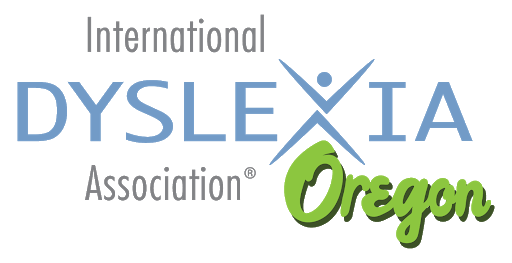Parent First Steps
I think my child has dyslexia, what can I do?
It can be overwhelming to know how to proceed when your child begins to struggle to learn to read, write and/or spell. Many parents often know something is not right early on, but are unsure what to do. Trust your instincts and have caution if you hear phrases from your school such as:
“they will catch up”
“wait and see”
“they will grow out of it”
“may be a late bloomer”
Children do not outgrow reading failure or dyslexia. Of children who display reading problems in the first grade, 74% will be poor readers in the ninth grade and into adulthood unless they receive informed and explicit instruction on phonemic awareness. Children do not mature out of their reading difficulties. Dyslexia is the most common and most carefully studied of all learning disabilities, accounting for 80-90% of all learning disabilities, according to Dr. Sally Shaywitz, Yale Center for Dyslexia and Creativity.
The optimal time for learning to read is in grades K-2. Unfortunately, it is common for the reading crisis to peak in the 3rd grade, as this is the point when children transition from learning to read to reading to learn (i.e., “3rd Grade Wall”). Regardless of when your suspicion occurs, it is important to find out if your child is struggling BECAUSE of dyslexia. Research indicates that dyslexia has no relationship to intelligence. There is no “cure” for dyslexia. Individuals with dyslexia need to learn strategies and mechanisms to manage in a text-dependent society. The earlier a child with dyslexia is diagnosed, the more effective educational interventions are likely to be. However, a wealth of evidence shows that intensive, high-quality literacy instruction can help students who are struggling build the skills they need to succeed. In other words, it is never too late. Older students with dyslexia, including adults, can benefit from specialized reading and writing instruction, but it is essential for them to find an instructor who is highly trained to successfully teach individuals with dyslexia (see Adolescents and Adults with Dyslexia, 2020)
STEP 1: Get the Facts
Thanks to public awareness and activism over the last few years, more and more people are becoming familiar with the term “dyslexia.”
- Dyslexia is neurobiological in origin (i.e., it’s in the brain, and you are born with it).
- Dyslexia is very common; up to 20% of people have symptoms of dyslexia.
- Dyslexia crosses all ethnicity, socioeconomic status, gender, and locations.
- Dyslexia is not caused by laziness, inattention, low intelligence, or social/emotional problems. However, the frustration of failing to learn in school can cause emotional problems.
- Children at risk for reading failure can be reliably identified even before kindergarten (age 5!).
- Dyslexia is classified as a Specific Learning Disability (SLD). This is a key term that you may see from school, professionals, on paperwork.
Explore this website for more information on dyslexia. We suggest you start with: About Dyslexia Do I Have Dyslexia Recommended Resources Join IDA Oregon Branch to tap into a community of experts, parents, students, teachers and more! Remember...You Are Not Alone!
STEP 2: Make a Move
There are several paths you can take in the beginning. Below is a decision tree to help guide you through the various paths. Based on your situation, you may take 1, 2 or all 3. These paths will take time and patience to complete. At this point, it is critical to find out if your child is struggling BECAUSE of dyslexia.
 |
||
 |
 |
 |

Path 1: Talk with your child’s Health Care Provider
Please note that your child’s health care provider will not provide a dyslexia diagnosis. Dyslexia is commonly referred to as a “hidden disability.” It is not a disease and it cannot be diagnosed in the same way that a medical condition is determined. There is no blood test or scan test that determines dyslexia and a diagnosis is the determination of a qualified professional. However, our understanding of Dyslexia is scientific – the difference in the way the dyslexic brain processes linguistic information at the level of the phoneme is well documented in scientific literature as far back as 1930’s.
Seeing a physician can be extremely useful as it will help identify and rule out other medical conditions. It is thought that up to 40% of children with learning disorders may have a coexisting medical problem. If you are going to see your doctor, it is helpful to know what to expect and what to bring. The following is a list of things to bring to make the most of your doctor’s appointment. These will help your doctor rule out/in medical issues that may be causing or contributing to issues in school.
- Family history – anyone in the family with learning problems, hearing problems, or developmental delay? For each biological parent:
- How much difficulty did you have learning to read in elementary school?
- Did you have difficulty learning letter sounds and names and/or color names when you were a child?
- In comparison to others in your classes, how much did you struggle to complete your work?
- Prematurity or problems when your child was born
- Problems or exposures during pregnancy, including alcohol or drugs
- Any known neurological problems, including ADHD, depression, anxiety, or developmental delays, including speech/language
- Any chronic health problems
- Any causes for repeated school absences
- Any testing that has been done (eye doctor, hearing, school testing)
- Any notes from the teachers explaining concerns
- How is your child’s sleep? What time does your child go to sleep and wake up?
Remember to write down what your concerns are before the appointment as you often you will forget if you don’t have them in front of you.
Download Information for Your Doctor
Please note that you can request testing from your school, but often your school will request you see your doctor first. It is very important to know you DO NOT have to see your doctor before starting testing through the school. These activities can be done at the same time.

Path 2: Talk to Your Child’s Teacher / School
As a parent, guardian or advocate, you have a legal right to request that your public school evaluate your child for special education. The Individuals with Disabilities Education Act (IDEA) is the federal law that defines and regulates special education. The law requires public schools to provide special education services to children ages 3 to 21 who meet certain criteria. To qualify for special education services, a student must
(1) Have a documented disability that is covered by IDEA, and (2) Need special education in order to access the general education curriculum.
“Access” is an important term in education. Making the curriculum accessible to students with disabilities is a lot like making buildings accessible to wheelchairs. If there’s a barrier to your child’s learning, such as difficulty reading, the school needs to come up with the equivalent of a wheelchair ramp to help your child access the reading material. School districts have a process in place to determine which students are eligible for special education.
➡ Request an Evaluation: You are entitled to a free evaluation no matter where your child goes to school, whether it’s a public, private, or charter school, or if you are home school. Your request needs to be in writing, states your reasons for the request, and provide consent for your child to be evaluated. Always follow up that the letter has been received and/or hand-deliver the letter to the school.
Scenario 1: School Denies to Evaluate
Sometimes parents get some pushback when they request an evaluation through the public school system. Do not accept these common excuses:
- we do not recognize dyslexia — it’s a “medical issue.” See this Department of Education Guidance Dyslexia
- we will not conduct an evaluation because your child is not failing.
- we will not conduct an evaluation, because your child is in a gifted program.
- we will not conduct an evaluation because your child has not completed their intervention programs often called Multi-tier System of Supports – MTSS. Response to Intervention (RTI) and Positive Behavioral Interventions and Supports (PBIS) both fall under the MTSS umbrella. IDEA regulations state that parents don’t have to wait for their child to go through all phases of MTSS before they request an evaluation for special education. They can ask for an evaluation at any point. MTSS can’t be used to delay or deny evaluations of students suspected of having a disability.
If the school outright refuses to conduct the evaluation, you need to get in writing the reasons why they are refusing. The way you ask for this is by saying you want “Prior Written Notice.” When they realize they have to put their reasons in writing, many times schools take a closer look and realize they should conduct the evaluation. Consider these next steps:
- Gather more information about your child and make another request
- Pay for a private evaluation. The school must consider your private evaluation and will either conduct its own evaluation or decide if eligible for IEP.
- Look into a 504 Plan. You may request a 504 Plan and the steps are similar to requesting special education evaluation. Many parents may choose a 504 Plan instead of an IEP.
Do not give up, consider finding an Education Advocate or an attorney to discuss possible next steps.
Purpose of Prior Written Notice: Prior written notice serves as a vehicle of communication between schools and families. School districts must provide you with prior written notice after a decision has been made regarding matters affecting your student’s IEP or eligibility for special education, but before any decision is implemented or changes to your student’s program take place. Prior written notice must be provided in your native language or other mode of communication that you understand. Some examples of when you will receive prior written notice are:
|
Scenario 2: School Agrees to Evaluate
The law says schools must evaluate in all areas of suspected disabilities. They may refuse to use the term “dyslexia.” If they tell you they do not test for dyslexia agree to have academic skills tested. This is not to time to argue about terminology, you are just trying to get the testing.
Most schools will test all areas of concern and this usually includes (but it not limited to) cognitive testing (aka intelligence testing), visual processing, auditory processing and reading and writing skills. Important note: dyslexia is not an auditory processing problem nor is it a visual processing problem; it is a phonological processing problem that often shows up in the subtests of the reading and writing assessments. Request the specifics on what will be used for testing. And understanding the results of the school testing can be difficult and you may need to ask the school experts to explain everything! Often determining if your child has dyslexia will be hidden “between the lines”.
Remember that schools do not diagnose dyslexia, they determine eligibility. The results of the evaluation may not specifically state “dyslexia”, but may instead state something about qualifying for services under the umbrella term Specific Learning Disability (SLD). This is often double talk for the child has dyslexia, dysgraphia, dyscalculia, etc. Request a copy of the criteria the school district uses for determining whether a child has a “Specific Learning Disability.”
➡ Eligible:If your child is found eligible, they can receive special education in school and provided an Individual Education Plan (IEP). Also make sure that your child is getting classroom and homework accommodations and access to assistive technology, as reading and writing gets more demanding in the upper grades. If your child’s school does not have anyone trained to deliver the kind of instruction that research shows works best for children with dyslexia, you may consider finding a private tutor or school specializing in dyslexia teaching. Remember this is just a first step on your journey! This is the tip of the iceberg, but at least you know and you can use your new evaluation as a road map for determining what types of interventions your child needs to make progress. There is a lot of information on both IEP and 504 Plans. Note: Some parents may choose a 504 Plan instead of an IEP. Each child’s situation is different. – DO THE RESEARCH! |
➡ Not Eligible:If you are told your child is not eligible for special education, ask the school to explain why in writing (“Prior Written Notice”). Consider these next steps:
|
💡 Tip: Investigate how well your Teacher and Curriculum supports Dyslexia at your school:
If your child is dyslexic, find out if your teacher/school knows HOW to teach students with dyslexia. Inquire how much experience they have with dyslexia. Find out what kind of reading curriculum is getting used in your child’s school. In many cases the teacher may not have proper training and/or the curriculum may not work with students with dyslexia. Your child may qualify for Special Education, but may not receive the correct teaching they require for dyslexia.
Parents who have children diagnosed with dyslexia should seek out reading instruction that is based upon a systematic and explicit understanding of language structure, including phonics. This reading instruction goes by many names, Structured Literacy, Orton- Gillingham, and others. See the links below for more information.
|
|
|

Path 3: Get Private Evaluation/Assessment
If money is not an obstacle, you may also consider getting a comprehensive private evaluation. Find a provider wisely and talk to others in your community and figure out who really understands dyslexia. A number of professionals have the training and experience to evaluate children for dyslexia. They include psychologists (school psychologists, educational psychologists, neuropsychologists), developmental-behavioral pediatricians, child neurologists, reading specialists and, especially in very young children, speech pathologists. Check your insurance policy to make an informed decision. Note that this path may be out of pocket cost.
Note: if you have an private evaluation with a Learning Disability diagnosis, the school must consider your evaluation.
💡 As a parent, you have complete control over a private evaluation. You can choose which type of testing to have done. Your school doesn’t have to agree that it’s necessary, and you don’t have to tell the school. Generally the professional will give a detailed written report summarizing the findings, and may also include recommendations as to the types of intervention or support that would be appropriate for the individual. Having a private evaluation will do these things:
- Relieves the emotional stress and anxiety for the child and affirms that they are not ‘dumb’. Never underestimate the emotional impact dyslexia has on a child.
- Provides evidence in the student’s file so that they can receive accommodations in elementary school, middle school, high school and post secondary education.
- Provides a clear path to the correct intervention so everyone can move forward.

